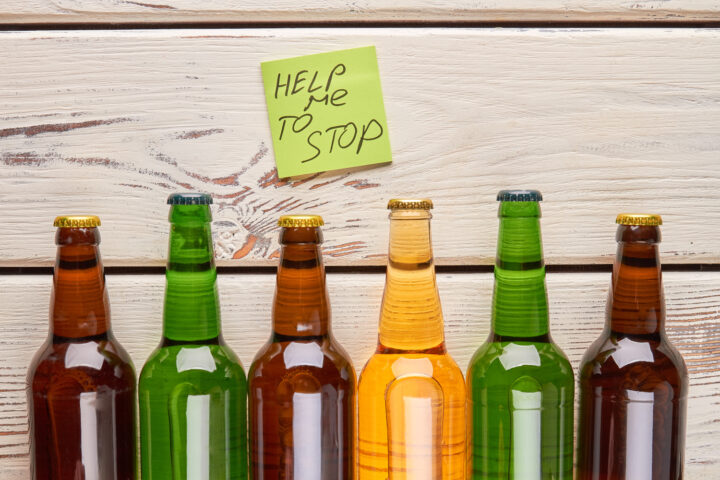AA – Alcoholics Anonymous
Abstinence – abstinence, declining dependence (pleased) resources.
Alcohol – Food Group, consisting of spirit and alcoholic beverages (see Alcohol Law).
Alcoholism – mental and / or physical dependence, which is generated as a result of alcohol use. (dr)
Alcoholic – a person with alcohol consumption as a result of a psychological or physical dependence on alcohol.
Alkomeeter – breathalyser gauge.
Amphetamine – amphetamines (including methamphetamine) are synthetic stimulants. Usually it is present in powder form, and can be inhaled through the nose, or injected into the mixed drink. Caused great psychological dependence, and may lead to physical dependence.
Replacement therapy – addicted to opiates in the treatment of a person registered in the Republic of Estonia, opiate-containing medicines to restore a person’s social coping ability.
Aversioonravi – vastikusravi; A method of treating alcoholism, which seeks to wean on alcohol drinking, causing an unpleasant feeling such as disulfiram. (Dr).
Detoxification – Compound of medical actions, which is the object of the acute withdrawal symptoms.
Ecstasy – the MDMA in tablet form to be consumed orally (eating). Creates a psychological dependence, and may lead to physical dependence.
Self-Help – non-professional approach, which uses individual and group support to help in the healing process uimastisõltumisest. Self-help groups to help patients establish social relationships and allow to practice their social skills.
GHB – full name gammahüdroksübutüraat. A synthetic drug which is present in liquid form and is administered by oral route (drinking). Gives rise to intoxication and to slow movements.
Hashish – are usually made by hand especially for cannabis näärmerakkude vaigutaolisest. After drying the mass obtained are pressed into pieces of various shapes. He is usually smoked in cigarettes or piibus. It can lead to psychological dependence.
Heroin – Heroin is a semi-synthetic opiate. Typically, there is a form of white powder (which is sometimes called white heroin due to distinguish it from the black heroin), by stirring the liquid is injected into a vein. Produces a very high psychological and physical dependence.
Kaassõltlane – alcoholic cousin who also needs care or support. The term is also used to refer to the society, which allows the alcohol dependency. Dr.
Harm reduction – health promotion, prevention of health problems, assessment and intervention activities designed to reduce drug use and addiction, and the health consequences of society without necessarily abstinence is achieved.
Hemp – a plant from which marijuana and hashish are prepared.
Strong alcoholic drink – alcoholic beverages with an ethanol content of more than 22 per cent by volume. Dr.
Cocaine – Cocaine is an alkaloid of plant origin. Of cocaine from coca leaves. Cocaine is usually mixed with milk sugar or another legal drug. The powder is pulled into the nose. Generate a very large psychological dependence, and may lead to physical dependence.
Abuse – substances such as your login time, circumstances and condition as it can be dangerous to health or impair the ability to cope in life (work and close relationship, the quality, the mental and physical ability to work, etc.).
Camp-type prisons – a business division of the former Soviet penal system built detention facility, which is the minimum number of isolated compartments. The majority of the prisoner to the penalty of large rooms in residential buildings, with a floor of a bathroom after a 1-2. Internally, the building and its courtyard are detained until the movement Alarms Nighttime free. Nighttime at the time, the rooms are unlocked and freedom of movement within the floor or a separate part.
Light alcoholic drink – alcoholic drink until the ethanol content. 22 percent by volume (see Law).
The child – to 18-year-old physical person ( the Child Protection Act (RT 1992, 28, 370 / … / RT I 1998, 17, 264)).
LSD – lysergic acid diethylamide
The low-threshold counseling center – easily accessible counseling center for drug addicts, which is characterized by user-friendly services and harm reduction rather than a constant emphasis on achieving abstinence. Guests are offered counseling, hygiene; the opportunity to needle exchange and substitution therapy.
Marijuana – Cannabis marijuana is dried and ground and the tops õisikuosad, may also contain a smaller stem portion. Smoke marijuana typically neat or in combination with tobacco. It can lead to psychological dependence.
MDMA – full name methylenedioxymethamphetamine. The substance used for making ecstasy.
” Black heroine ” – an opiate-brown liquid, which is injected. The liquid from the opium poppy pods certain liquid extraction and subsequent acetylation. Produces a very high psychological and physical dependence.
Junkie – a person with narcotic drugs or psychotropic substances as a result of a psychological or physical dependence on these substances.
Drug – psychological or physical dependence, which is generated as a result of use of narcotic drugs and psychotropic substances.
The drug – a chemical substance that causes changes in the person’s mental, physical and even emotional performances of normal.
Narcotic drugs and psychotropic substances – narcotic drugs and psychotropic substances Act, Section 8 paragraphs 1 and 2 shall be drawn up in accordance with the lists agents as well as agents stereoisomers, esters, ethers and salts.
Drug Free Division – isolated incarceration facility, where inmates will be staying through a variety of complex therapeutic programs. The department will transfer the prisoner’s application for voluntary and based on bilateral (prisoner-prison administration) contract under which a detainee undertakes to refrain from the use of drugs and voluntarily agree to check urine samples from the first request.
Young – seven to twenty-six years of a natural person ( the Estonian Youth Work Act (RT I 1999, 27, 392 / … / RT I 2002, 90, 521)).
Opiates – represent a group of many natural and synthetic substances (including morphine, methadone, etc). Lähtetaimeks is psyllium. Is called opium poppy cured (dried) latex was obtained by growing heads made paragraphs.
Prevention – primary prevention interventions understood before the emergence of health problems: health problems invaded the surrounding causation is removed from the network, and this one node. The secondary level of prevention is understood already emerging, but not yet clinically prominent disease or health problem detection and intervention, which can make a better prognosis. Tertiary levels of prevention is meant the avoidance of a medical history, clinical diagnosis or the behavioral symptoms manifest as early as possible the restriction (J. Van der Stel, 2001). Dr.
Problematic drug use – injection drug use or long duration / regular use of opiates, cocaine and / or amphetamines.
PROM – 1 gram per liter of alcohol in the blood. Dr.
Probing – the individual (s) experience (s).
Treatment – a disease, disorder, or symptom of disposal.
The treatment process – personal investigation, diagnosis, treatment and rehabilitation of persons, which includes relationships between patients and doctors and other persons involved in the treatment and the health insurance agencies.
Rehabilitation – the course of the disease the affected functions restoration.
Relapse – uncontrolled re-use of addictive substances, after karskusperioodi. Dr.
ICD-10 – the WHO International Classification of Diseases 10.väljaanne. Dr.
Social integration – interaction, väärtusorientatsioonide sharing and consensus building mechanisms that alter the announced regulations actually work.
Social partners – here: the social partners – employers, employees.
Addiction – addiction forced consumption of substances that an individual can not control and that leads to severe the health, psychological and social problems of creation; consequently includes psychological dependence and addiction addiction concept; a physical or physiological dependence on the effects of a chemical substance of the nervous system resulting from the adaptation condition manifesting withdrawal symptoms, after completion of the active agent. Dr.
Synthetic drugs – substances produced in laboratories artificially from psychoactive drugs (including ecstasy, amphetamines, LSD).
Tolerability – 1) the need for an increasing amount of the substance according to the psychotropic drug to achieve intoxication (intoksifikatsiooni) or the desired effect; 2) increasing the impact of weaker than the same amount of use of narcotic substances.
Informed consent – consent, where the person is able to understand the nature of the agreement and the grant or denial of the consequences.
Coping – a person or a family or a psycho-physical ability to cope with everyday life.
Tolerance – the ability to increase the tolerance of the addictive substance or continuous administration of a booster. Dr.
Tobacco product – cigars, cigarillos, cigarettes, smoking tobacco and chewing tobacco Alcohol, Tobacco and Fuel Excise Duty Act, (Tobacco Act), Dr.
Tung – psychobiology inimsuhted human agitation, and an urgent need to return to the addictive behavior, which is characterized by a strong desire for, prior experience, and can be impulsivity.
Outreach – an activity area for contact with individuals or groups with whom contact has not yet been effectively established or who are not covered by existing services or through traditional health education channels.
Drug prevention – primary prevention interventions understood before the emergence of health problems: health problems invaded the surrounding causation is removed from the network, and this one node. The secondary level of prevention is understood already emerging, but not yet clinically prominent disease or health problem detection and intervention, which can make a better prognosis. Tertiary levels of prevention is meant the avoidance of a medical history, clinical diagnosis or the behavioral symptoms manifest as early as possible the restriction (J. Van der Stel, 2001).
Drug dependence – a primary chronic disease characterized by the duration of the attenuated reference narcotics abuse, and the use amount of the way in the other aspects of life itself in the spotlight to the accumulation and drug addiction, drug abuse, and in spite of their negative influence on the body reflection of dysfunction. Like other chronic diseases, it may be a progressive, fatal, and falling back.
Withdrawal – varying degrees of a set of symptoms that occur on withdrawal of either absolute or relative narcotic substance if the substance has been consumed on a regular basis, and is usually a long and / or high doses.



